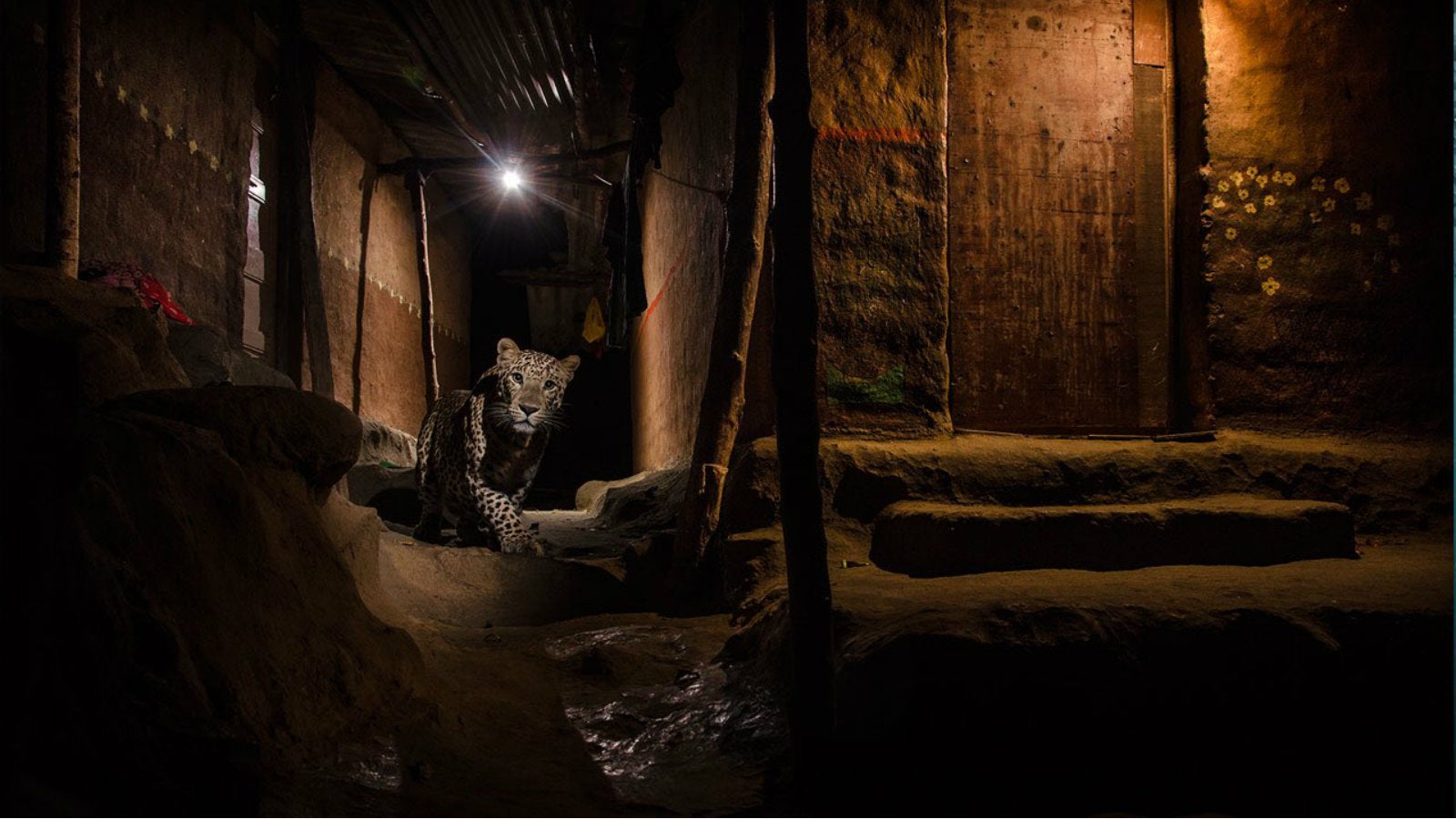A leopard loitering around a Mumbai suburb got clicked by a biology professor
It took conservationist and biology professor Nayan Khanolkar four months to capture the perfect shot of a leopard roaming through the Aarey Milk Colony in suburban Mumbai. But all that waiting paid off.


It took conservationist and biology professor Nayan Khanolkar four months to capture the perfect shot of a leopard roaming through the Aarey Milk Colony in suburban Mumbai. But all that waiting paid off.
Khanolkar’s photograph titled “The Alley Cat” has just won him the award for the world’s best wildlife photographer in the urban category for this year. The prestigious prize is instituted by London’s National History Museum.
The alley cat in question is likely one of the 35-odd leopards living in the 103-sq. kilometre Sanjay Gandhi National Park, an urban forest reserve in one of India’s most populous cities.
Once home to a sizeable population of both leopards and tigers, the area has fallen victim to Mumbai’s rapid growth and booming population which, over the years, have destroyed much of the big cats’ habitat. Tigers went extinct in the area nearly 90 years ago. Leopards, however, continue to thrive despite the threat of poaching, co-existing with the over 300,000 people who live in and around the park.
For Khanolkar, whose interest in wildlife photography has sent him travelling across the country, capturing the images of these urban leopards is one way to remind Indians of their magnificence. It also helps convince anxious citizens that it is possible to live safely alongside them. And that’s important for conservation.
“I wanted to convey that if co-existence with predators is possible in the centre of a metropolis, there is no reason why it shouldn’t be possible anywhere else in the world,” Khanolkar told The Hindu.
As Mumbai grows further, the leopard habitat is under greater threat, forcing the big cats to venture into human settlements in search of food. This has, over the years, resulted in several unfortunate incidents involving leopard attacks.
In August, for instance, a leopard fatally attacked a 54-year-old woman in a village in Thane district, sparking a thirst for revenge among members of her community. This increasing human-animal conflict threatens the leopards, making Khanolkar’s efforts at conservation and education even more important.